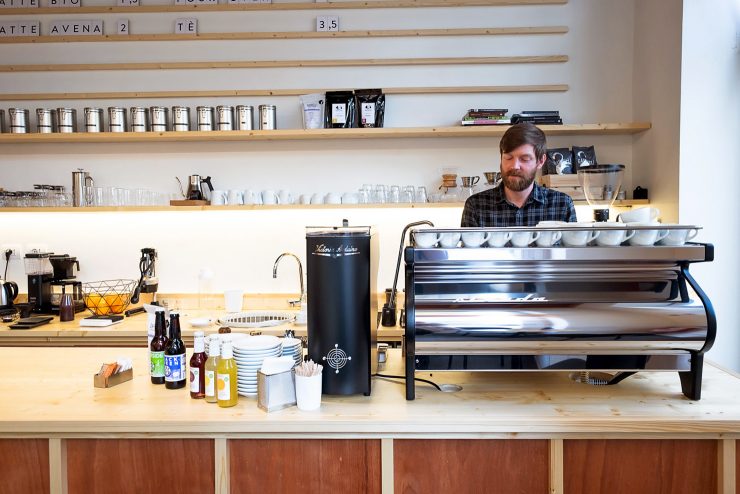
Milan is a city known for fashion and style, art and culture, aperitivos and cocktails. But coffee? Not so much. There are countless opportunities to order espresso in Milan, but is it always worth drinking? I’m Italian, but after many years of living in London, my taste for coffee has changed. I prefer a lightly roasted, fruity, and acidic coffee to a bold, dark-roasted Italian-style espresso. I recently traveled to Milan and, in my quest for specialty espresso, I was pointed in the direction of Orsonero Coffee, a newly opened cafe near Porta Venezia and the shopping district of Corso Buenos Aires.
It’s been two years since I was last in Milan to write about the second Italian AeroPress Championship. Back then, not many people here knew about specialty coffee. There were just a handful of cafes where you could have pour-overs and a choice of single-origin beans, most notably Taglio near the Navigli.
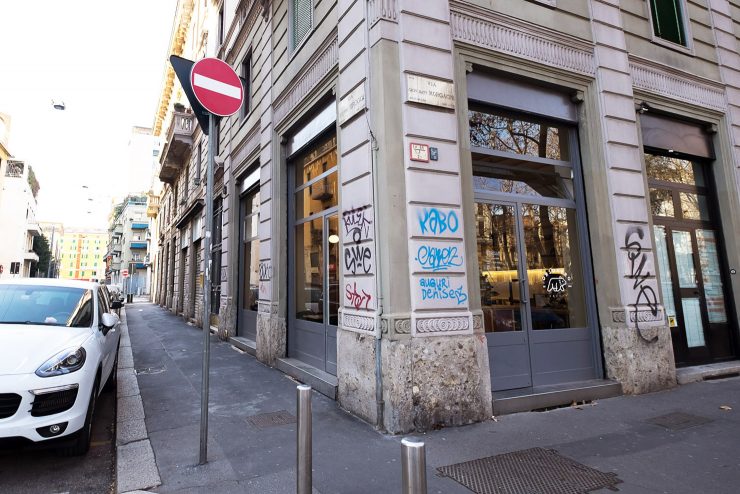
Since then, the Expo 2015 has come to Milan, bringing a breath of fresh air and innovation to the northern Italian city, together with a new wave of expats. Something has changed: It seems more cosmopolitan today than it ever was, even the locals feel it. The coffee scene is growing and so is the demand for specialty coffee, as I discovered after visiting Orsonero Coffee and chatting to its Canadian proprietor, Brent Jopson. Jopson and his wife, Giulia Gasperini, relocated to Milan from Vancouver, BC, in 2015 and, after noticing the lack of specialty coffee shops, decided to stay to open their own place.
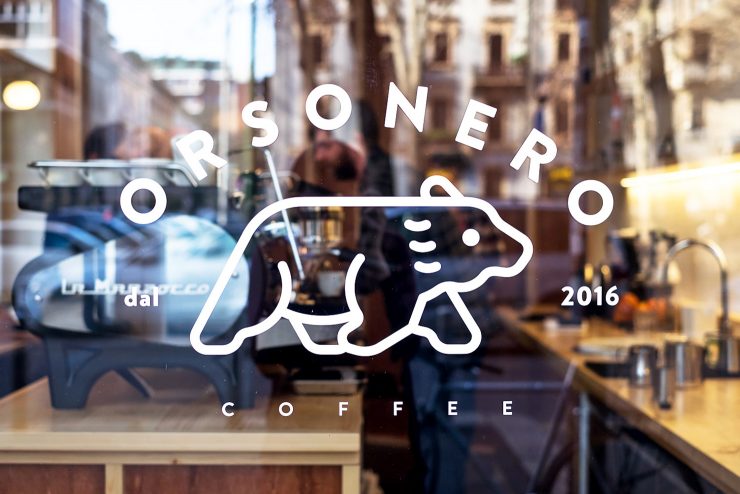
The first thing to note about Orsonero Coffee is how the shop looks. Unlike other specialty coffee shops that have opened in Italy in recent years (such as Ditta Artigianale in Florence) but retain a traditional Italian cafe style, Orsonero looks and feels different. The aesthetic is minimalist, with white walls and light wooden tables. The menu is pared down: espresso-based drinks, filter, tea. There is food too, but only pastries and sandwiches from local suppliers. Here the focus is all about coffee.
“We wanted Orsonero to look like a specialty coffee shop you might find in any other global city,” says Jopson. “We took inspiration from cafes in my home city [Vancouver], northern Europe, and Japan, and our architects, Enrico Forestieri and Matteo Pace, were able to articulate our vision perfectly.” It’s true, Orsonero would make sense in Vancouver, Melbourne, or London and fit in perfectly. However, if you spend some time sitting in the cafe, drinking espresso, and watching locals drop by just to have a quick espresso at the counter, you feel 100 percent in Italy.
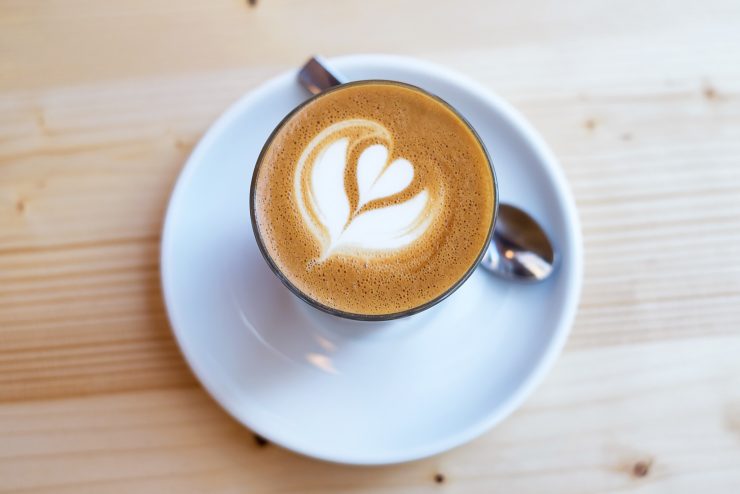
It all starts with the beans, which are roasted and blended by Italy’s top coffee roaster Rubens Gardelli. The choice of serving Gardelli Coffee was an easy one for Jopson, as he was keen to support the Italian specialty coffee scene. Gardelli, Italy’s Roasting and Brewers Cup champion, not only has the best coffee available but was also able to supply the type of lighter roast profile Jopson was looking for.
The house espresso is Cignobianco, Gardelli’s signature espresso blend. It’s made with two seasonal fresh-crop lots of specialty-grade Arabica (Brazil and Panama at the moment). It has the espresso taste that Italians love, without compromising on the quality of the beans and of the roast. “Italians are used to drinking espresso blends with quite a bit of Robusta so they’re not used to acidity you get from a lighter roasted third wave–style espresso,” Jopson says. “Cignobianco is perfect for us because it has a lot of sweetness, good body, and just the right amount of acidity. Our customers recognize it as an Italian espresso but still see that it’s something a little different.”
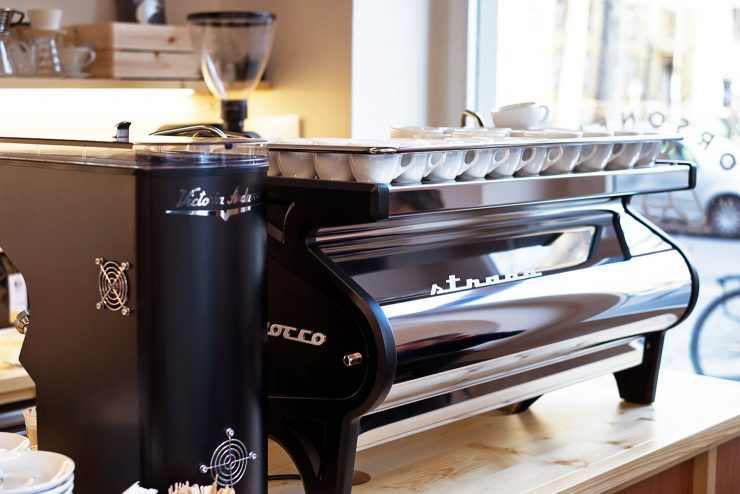
Orsonero also offers filter coffee on the Kalita and AeroPress, with two single-origin coffees to choose from (Gardelli beans for now, but Jopson plans to offer international guest coffees in the future). “We do around 5 to 10 pour-overs a day during the week and between 20 and 30 on Saturday. There is growing demand for filter coffee in Milan and I’ve noticed a lot of places are starting to offer pour-overs—not just coffee shops, but also ice cream shops, restaurants, etc.,” Jopson adds. “Maybe it’s just a trend. Filter coffee is interesting because Italians don’t seem to have any preconceptions about the price. You can sell a cup of batch brew for €3 and nobody complains.”
It’s a different story when it comes to espresso. A coffee ordered at the counter in Italy usually costs €1 and Italians aren’t easily convinced that it is worth paying more for it. Although a single espresso at Orsonero is €1.20 (just 20 percent above the average price), some customers have complained about it and even walked out of the cafe. “When one of our customers asks why our espresso is more expensive, I say it’s because we use 100 percent Arabica from a small-batch artisan roaster and that’s usually enough to convince most people,” says Jopson. “It’s funny because when foreign people come in they often say they can’t believe how cheap the coffee is.” Coming from London, that is exactly what I thought!

I order a flat white and sit at one of the small tables, observing the people in the cafe. There are groups of friends sitting at each of the other two tables and I even recognize a famous Italian TV presenter. I notice people coming and going, who order an espresso at the counter, drink it quickly while chatting to Brent and leave the bar within minutes. “Drinking coffee at the bar counter is something I really love about Italian coffee culture, so I am not trying to change that,” says Jopson. “We wanted to have low counters with the espresso machine on the front facing the customers so that I could interact with them while I’m making the coffee. I was worried that would discourage people from drinking at the bar, but it doesn’t seem to be a problem.”
Before leaving the cafe, I ask Jopson about the future of the Italian specialty coffee scene. Recent openings such as that of Faro in Rome and Estratto in Brescia have made me hopeful that things are changing in coffee in Italy, but is it really true? “The specialty coffee scene in Italy is growing, albeit slowly,” he says. “I don’t think we’re going to see a huge boom of specialty shops opening in the big cities like it has happened in other countries, but we will see a few more shops and maybe small roasteries opening in Milan and Rome in the next couple of years for sure.”
Orsonero Coffee is located at Via Giuseppe Broggi, 15, Milan. Follow them on Facebook and Instagram.
Giulia Mule is a Sprudge.com contributor based in London. Read more Giulia Mule on Sprudge.
The post Italian Espresso Reimagined At Milan’s Orsonero Coffee appeared first on Sprudge.

